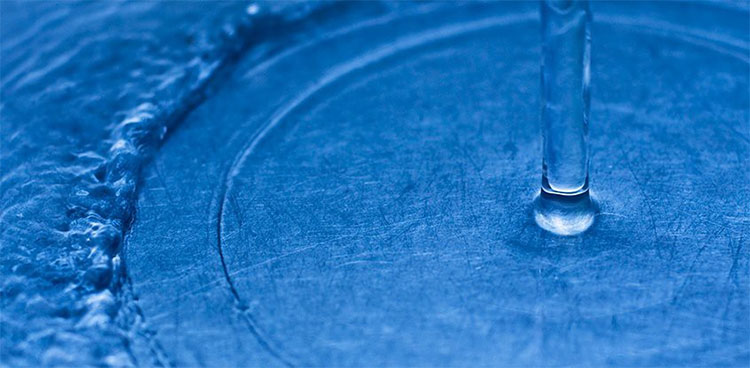Strange phenomenon caused Leonardo da Vinci to give up now has an official answer
Meeting a lot in nature, but the truth about them is big unknown, so the genius has to "headache".
In the 15th century, Leonardo da Vinci - the eminent genius of Italy - happened to see images of ripples radiating in a circle when the droplet hit the lake next to where he lived. This phenomenon is now called hydraulic jumps .
With his smart mind, he worked hard to find the answer to this very familiar phenomenon.
But even at his death, his answer was still vague, considering that this phenomenon was simply due to . the inertia of the country.

The ripples radiate into a circle when the droplet hits the lake.
By 1914, physicist John William followed the Italian genius to find the origin of those strange "hydraulic jumps" . Finally, he concluded that there are three elements that make up this phenomenon, including: viscosity, kinetic energy and potential energy (potential energy).
According to William, when an object falls and touches the water at a certain height, the gravitational potential will be born. Along with that, the viscosity of the water will combine to create a kinetic force, creating diffuse "water waves" as shown in the following illustration.

The gravitational potential from a vertical stream of water, combined with the viscosity in the water, will create a rolling 'wave' of waves.There are 3 types: 1, 2a and 2b.
And this is an 'honest' image .
So is this the "best" answer?
In a recent report from Cambridge University, physicist Rajesh Bhagat and his colleagues discovered that: The gravitational field does not play a major role in hydraulic hopping.
Instead, water surface tension and friction of water viscosity are the two main elements of this natural phenomenon.

Surface tension (Fs) occurs when there is a perpendicular tension (Fw) with the liquid plane as shown in the image.
According to Bharat, after making a series of experiments based on the height of the falling object (z), he realized that the Earth's gravity did not produce a potential energy large enough to affect the hydraulic jump, such as had a previous question.
"We have found that surface tension and viscosity are sufficient to balance the momentum of water, and the role of gravity is very modest."
"Understand the mechanism of forming hydraulic jumps will be the first step in applying them to practice, namely cleaning vehicles or industrial equipment without wasting too much water" , Bharat adds.
Although there will be many difficulties ahead, it must be true that Bharat's solution and his colleagues have satisfied the question that science has left open for a long time.
- Leonardo da Vinci and secrets not everyone knows
- Find out the descendant of the life of Leonardo da Vinci
- Disgusting illness caused the artist Leonardo da Vinci to stop painting
- 4 giant 'treasures' of Leonardo Da Vinci: The solution after 500 hundred years
- Discover the secret talent of the great Leonardo da Vinci
- Hair fibers are expected to make history after 500 years Leonardo da Vinci died
- Effort to save Leonardo Da Vinci's self-portrait
- Memo book of Leonardo Da Vinci
- Scientists want to rebuild Leonardo da Vinci's genome
- Revealing the portrait of Leonardo da Vinci through an ancient 500-year-old painting
- Leonardo da Vinci has a sharp artistic eye due to vision problems
- After 500 years, MIT proved that the bridge design of Leonardo Da Vinci is extremely reasonable
 'Fine laughs' - Scary and painful torture in ancient times
'Fine laughs' - Scary and painful torture in ancient times The sequence of numbers 142857 of the Egyptian pyramids is known as the strangest number in the world - Why?
The sequence of numbers 142857 of the Egyptian pyramids is known as the strangest number in the world - Why? Miracle behind the world's largest stone Buddha statue
Miracle behind the world's largest stone Buddha statue What is alum?
What is alum?